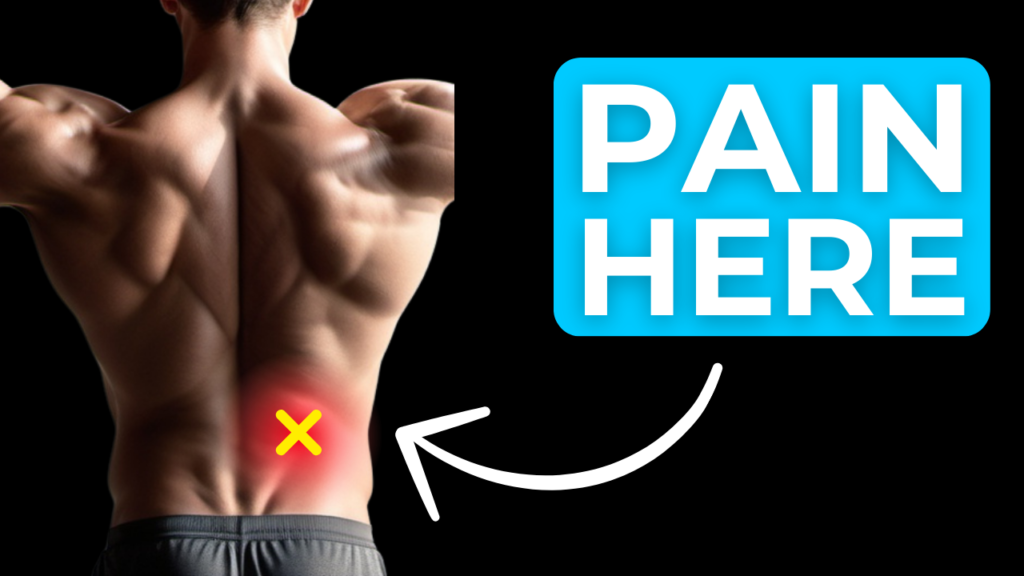
How Do You Release Quadratus Lumborum (QL) Muscle? – Mobility Suite
- Dr. Mitch Israel
- Lower Back, Mobility, Stretching

Exercises for Quadratus Lumborum (QL) Pain Relief
The quadratus lumborum (QL) is a deep muscle in your lower back that plays a crucial role in spinal stability, posture, and side bending movements. When this muscle becomes tight or overworked, it can lead to QL muscle pain, stiffness, or even referral pain into the hips and ribs.
So how do you release the quadratus lumborum effectively and maintain long-term relief? The key is to follow a structured, science-based approach like the Functional Mobility Formula. This method focuses on four essential steps: Recognize, Reduce, Restore, and Reinforce. By addressing QL muscle strain from multiple angles, you can ease discomfort, improve mobility, and prevent future issues. Let’s dive in.
If you prefer videos, watch the video version below!
Why Does the Functional Mobility Formula Work?
Many approaches to QL muscle strain focus solely on stretching or massage. While these methods can provide temporary relief, they fail to address the underlying movement dysfunctions that lead to quadratus lumborum muscle pain in the first place.
The Functional Mobility Formula is a comprehensive system designed to not only release tension but also restore proper movement patterns and reinforce strength and stability. By following this method, you’ll systematically work through each step to ensure lasting relief.
Step 1: Recognize the Problem
The first step in relieving QL muscle pain is identifying the source of discomfort. The quadratus lumborum spans from the top of your pelvis to your lower ribs and is commonly overworked due to prolonged sitting, poor posture, or asymmetrical movement patterns.
Common Symptoms of QL Muscle Strain:
One-sided lower back pain or tightness.
Pain that worsens with prolonged standing, sitting, or walking.
Discomfort when bending to the side or twisting.
Baseline Tests:
To determine if the quadratus lumborum is your issue, try these simple movement tests:
Toe Touch Test: Stand tall and slowly bend forward to touch your toes. If you feel a significant pull or tightness in one side of your lower back, your QL might be involved.
Side Bend Test: Stand upright and side bend towards one side. If you feel a strong stretch or a tugging sensation in your lower back, your QL may be contributing to the stiffness.
Recognizing these signs will guide the exercises and stretches you’ll use in the next steps.
Step 2: Reduce Tension
Once you’ve identified the issue, the next step is to reduce tension in the quadratus lumborum using targeted stretching exercises.
Child’s Pose with Side Bend:
Start in a quadruped (all fours) position and sit your hips back into a child’s pose.
Reach your arms forward, then side bend by walking your hands diagonally to one side.
Breathe deeply into the stretched side, holding for 10-15 breaths.
Repeat on the other side.
This stretch helps elongate the quadratus lumborum, alleviating tightness and promoting relaxation. If both sides are tight, be sure to stretch each side equally.
Step 3: Restore Range of Motion
After reducing tension, the next goal is to restore spinal mobility. This ensures the QL regains its functional movement without compensatory stiffness.
Kneeling Side Bends:
Kneel on the floor with your hands crossed over your chest.
Slowly bend sideways, trying to move one vertebra at a time.
Pause at the end range, then return to the starting position.
Perform 5-10 repetitions per side.
This movement enhances spinal flexibility and ensures that the quadratus lumborum can lengthen and contract properly.
Step 4: Reinforce with Strength and Stability
The final step in the Functional Mobility Formula is reinforcing the changes with strength exercises. Strengthening the quadratus lumborum in its newly restored range of motion ensures lasting relief and prevents future QL muscle pain.
Side Plank Hip Dips:
Start in a side plank position on your forearm.
Lower your hip toward the ground in a controlled manner, then return to the top position.
Perform 5-10 slow and controlled reps per side.
This exercise strengthens the QL and surrounding core muscles, reinforcing stability and reducing the risk of recurring tightness.
Bonus: Reassess Your Progress
After completing this routine, reassess your symptoms and range of motion. Return to the baseline tests:
Can you now bend forward or to the side with less discomfort?
Do you feel more mobility and ease in your lower back?
If you see improvement, you’re on the right track. Consistency is key—perform this routine 3-4 times a week for lasting results.
Why This Approach Works
The Functional Mobility Formula addresses quadratus lumborum muscle pain holistically, tackling the root causes of tension and dysfunction. By systematically reducing tightness, restoring movement, and reinforcing strength, this method ensures that your QL functions optimally in both daily activities and workouts.
If you’ve been struggling with QL muscle strain or chronic tightness, start incorporating these steps into your routine. For personalized guidance or if your symptoms persist, consider consulting a movement specialist.
By recognizing, reducing, restoring, and reinforcing, you can relieve QL muscle pain and prevent it from returning. Take the time to invest in your mobility, and you’ll experience not just relief, but long-term resilience.




